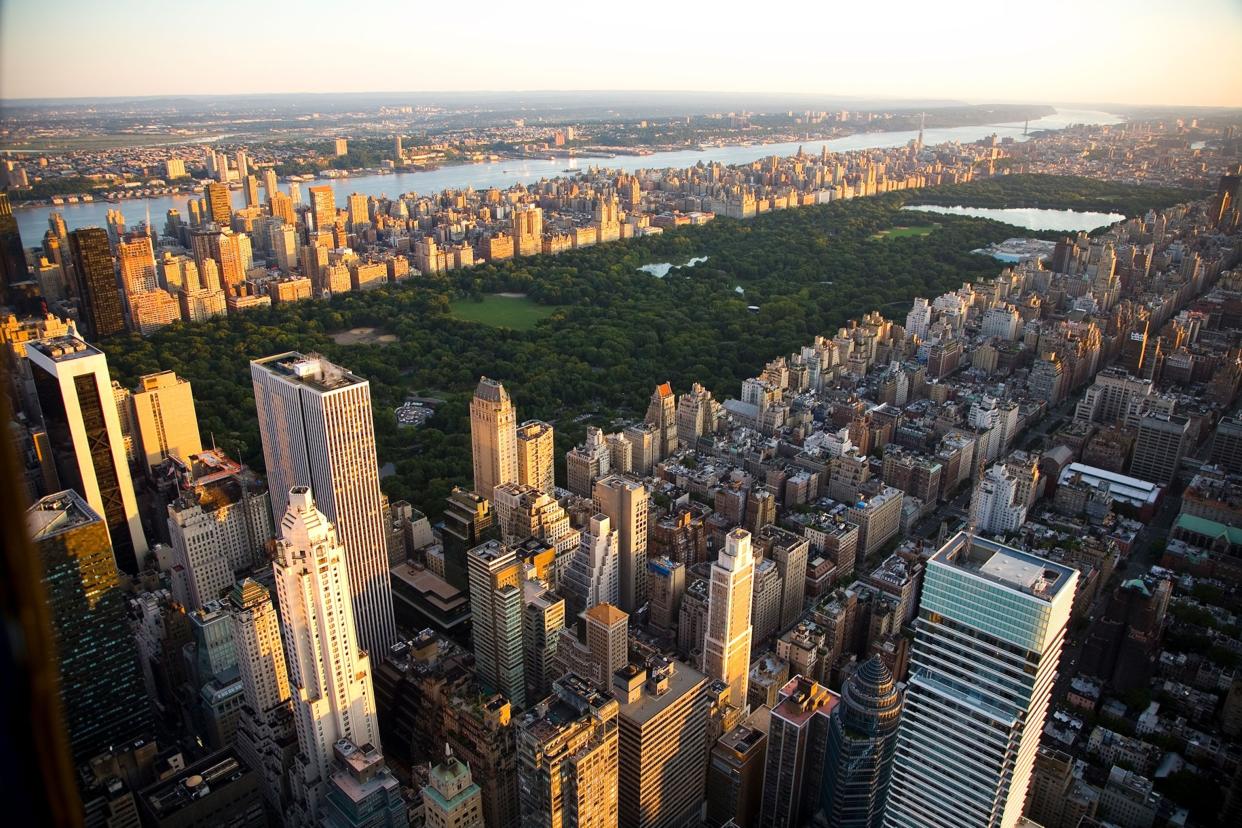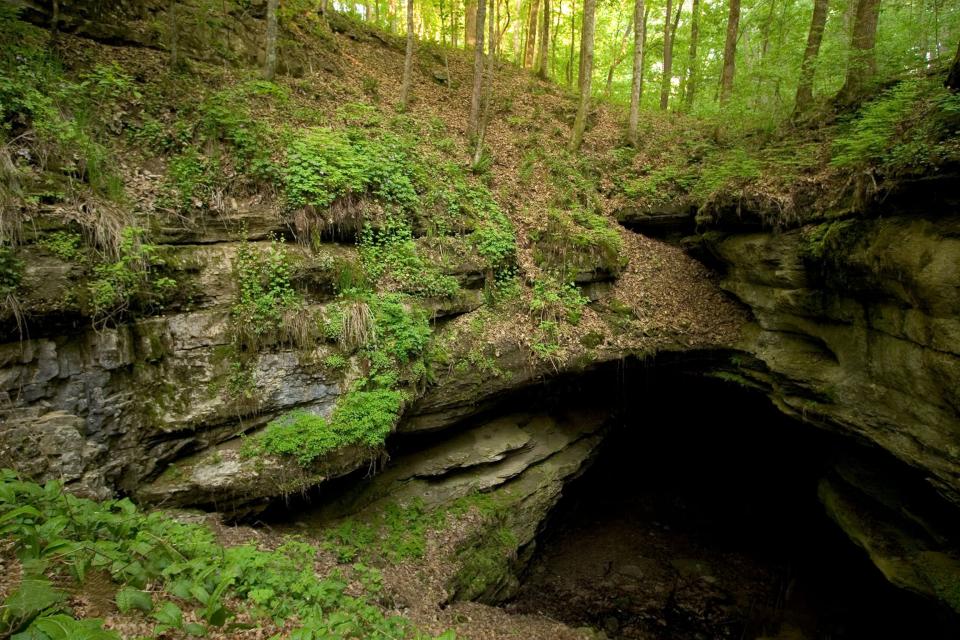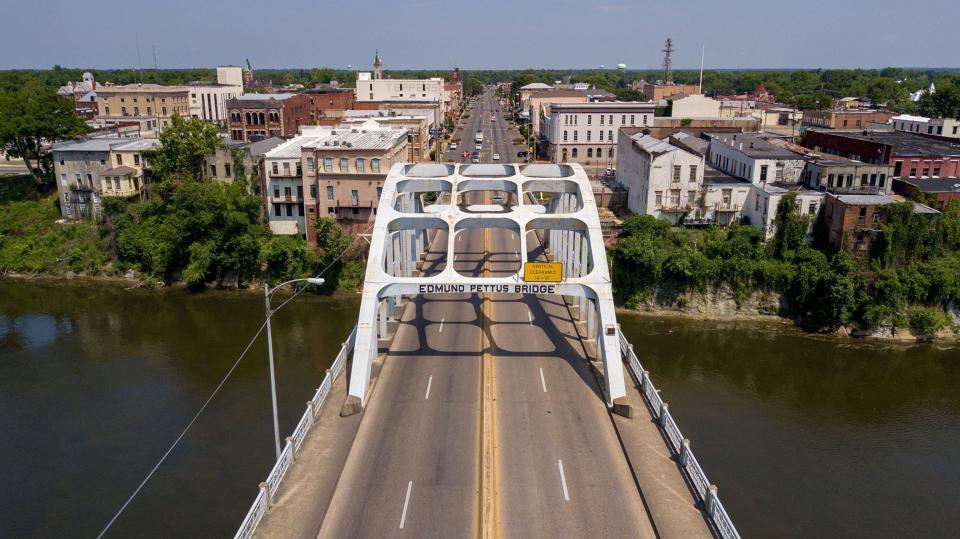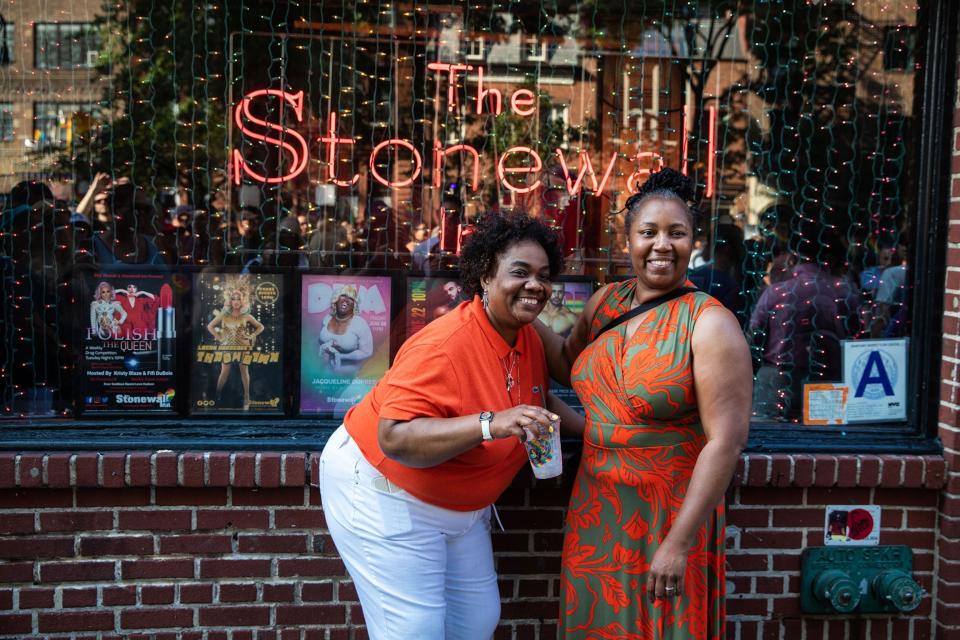Exploring America’s most surprising national landmarks
- Oops!Something went wrong.Please try again later.
- Oops!Something went wrong.Please try again later.

Central Park, New York
In 1853, when New York State officials approved the funds to purchase land for a park in Manhattan, little did they know that this rocky, swampy terrain covered in small farms would truly become the beloved “lungs of the city” it was intended to be and a respite for 42 million annual visitors.
As park designer Frederick Law Olmsted said about his vision, the park should be “a specimen of God’s handiwork” that could be to common people “inexpensively, what a month or two in the White Mountains or the Adirondacks is, at great cost, to those in easier circumstances.” Olmsted and his British architect partner, Calvert, designed their Greensward Plan, which allowed for formal and natural settings.
The park’s especially visionary element was the network of subterranean transverse roads, a feature that allowed pedestrians and carriages alike to enjoy the park without disturbing each other. More than a century later, much of the original park infrastructure, such as the Mall, the Lake, and the Pond, still exists.
Hallett Nature Sanctuary (formerly the Promontory) is the park’s smallest woodland area and was closed to the public for more than 80 years after invasive species like Norway maples, black cherry, and Japanese knotgrass strangled the native foliage. In 2016, after five years of restoration by the Central Park Conservancy, the nonprofit that maintains the park, Hallett reopened and is now an oasis for park wildlife.
Quiet walks through the woods are not the only adventure on tap in the park. Visitors can run, walk, cycle, or roller-skate along its myriad pathways; play a pickup game of ultimate frisbee with friends; dine al fresco at Tavern on the Green; or listen to a free summer concert. As Olmsted envisioned, Central Park is a beloved destination for both residents and visitors alike.
Mammoth Cave National Park, Kentucky

Mapped at 426 miles, Mammoth is the longest known cave system in the world. With each expedition, speleologists continue to find new passageways that are estimated to extend the system 600 miles farther underground.
Mammoth’s 330-million-year-old limestone walls echo with fascinating human history that dates back more than 4,000 years, when prehistoric Native Americans explored over 19 miles of cave passageways in search of minerals. It's still a mystery how the ancient people used these precariously procured substances. Some clues can be found in what they left behind, from gourd bowls to pottery and woven cloth, as well as a few petroglyphs that are mostly geometric depictions of humans.
Legend has it that the cave was rediscovered at the turn of the 19th century, when a Kentucky boy named John Houchin shot and wounded a bear, then followed it into the cave entrance—the same one used by visitors today. The fate of the bear remains unknown, but the rediscovery of the cave was an economic boon to the region. Over the past two centuries Mammoth has been used to mine saltpeter, the primary ingredient in gunpowder; grow mushrooms; and care for the sick in the form of a tuberculosis hospital.
Some of the cave’s first public tour guides in the mid-1800s were enslaved Black men like Stephen Bishop, the first person to cross the terrifying vertical shaft known as Bottomless Pit to discover miles of previously unmapped areas. Today, guests can take ranger-led tours that last up to six hours. The most comprehensive and rigorous is the Wild Cave Tour, which turns visitors into amateur speleologists, crawling, climbing, and squeezing their way through a maze of small holes and canyons for five to six miles.
Selma to Montgomerey National Historic Trail, Alabama

This 54-mile-long national historic trail commemorates the route, people, and events surrounding the 1965 Voting Rights March from Selma to Montgomery.
It began on March 7, 1965, in Selma, where 600 nonviolent protesters, led by Hosea Williams, John Lewis, Albert Turner, and Bob Mants, set out for Montgomery to demand their right to vote. When they reached the Edmund Pettus Bridge, law enforcement officers attacked the marchers with billy clubs, tear gas, and horses. News of this Bloody Sunday, as it became known, transfixed the nation.
On March 9, 1,500 protestors, led by Martin Luther King, Jr., were once again blocked by state troopers. This day became known as “Turnaround Tuesday.” On March 21, King, followed by 3,000 others, once again set out from Brown Chapel A.M.E. Church. To ensure a peaceful march, President Lyndon B. Johnson used federal authority to call up the Alabama National Guard, which, along with the FBI and federal marshals, lined U.S. Highway 80.
The march grew to 25,000 strong by the time it ended in Montgomery on March 25, where King delivered his famous “How Long? Not Long” speech at the Alabama State Capitol. The three voting rights marches had profound impact. Five months later, on August 6, President Johnson signed the Voting Rights Act into law.
Stonewall National Monument, New York

In the 1960s, there were very few havens for the LGBTQ+ community in the United States. One exception was New York City’s Greenwich Village, also a hub for artists, musicians, writers, and protestors of the Vietnam War.
It was home to the Mafia-run Stonewall Inn, a private bottle club where same-sex couples were allowed to openly dance and drink together (at the time, it was illegal in New York to serve alcohol to members of the LGBTQ+ community). LGBTQ+ rights outside the Stonewall Inn were nonexistent. After a raid on any bar where LGBTQ+ people were suspected to be gathering, police officers would line up patrons outside and force them to present identification. If they were wearing at least three pieces of clothing that didn’t match their I.D. gender, the police would arrest them.
Anger over the LGBTQ+ community’s mistreatment came to a boiling point in the early morning of June 28, 1969, when the police raided the Stonewall Inn and began arresting people. No one really knows how the riot started, but as more people were arrested, the crowd grew. One taxi driver died of a heart attack and many people were beaten, but this resistance, which lasted until July 3, served as a catalyst for the gay rights movement around the world.
In 2016 President Barack Obama declared the iron-gated, flower-filled Christopher Park across the street from the Stonewall Inn part of the national monument, the first National Park Service unit to tell the story of the struggle for LGBTQ+ rights. The park currently does not have a visitors center, but visitors can view photographs displayed around the monument fence and take a self-guided walking tour of important LGBTQ+ sites around Greenwich Village through park partners like the National Parks Conservation Association.
Portions of this work have previously appeared in Great American Parks, Copyright © 2024 National Geographic Partners, LLC. Available wherever books and magazines are sold.

